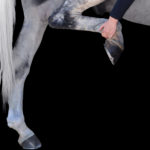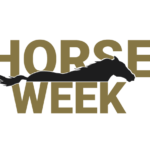
Hong Kong, August 8, 2008 — This was a heart-stopper of a day for two Olympic eventing individual medal contenders–and the competition hadn’t even begun.
Keen-eyed officials weren’t letting anything get by them at the first horse inspection (more commonly known as the trot-up) and that proved difficult for both the USA’s Phillip Dutton and William Fox-Pitt of Great Britain.
Phillip, riding in his first Olympics for America (he changed his citizenship after winning two team gold medals for Australia) was asked to jog Connaught a second time for the three judges. It was a digitalis moment reminiscent of the suspense he coped with at last fall’s Fair Hill International, when The Foreman was held and carefully examined by a veterinarian before being passed in the final horse inspection.
Phillip went on to win the event, but The Foreman was dropped from the eventing short list for the Olympics due to a splint problem. He was one of several short-listed U.S. horses that have gone by the wayside, including the much-missed Theodore O’Connor, who had to be put down after a stable accident last spring.
The U.S. isn’t fielding its strongest-ever team, so Phillip is vital to America’s medal hopes. But U.S. supporters had another shock when Phillip’s teammate, Gina Miles was asked to jog McKinlaigh again. Soon she was all smiles, however, as the announcer said, “Passed.”
The suspense continued on the flower-decorated strip beside the main competition venue at Sha Tin, where high rises and mountains both provide a dramatic backdrop.

William had an even worse time than Phillip and Gina, because his Parkmore Ed was held for veterinary inspection. Turns out the horse has a little hematoma “on his tummy” as teammate Mary King put it when we talked. It might have come from the girth or an insect bite, she conjectured. Parkmore Ed can continue in the event, but vets will keep looking at the spot to make sure it doesn’t get worse.
It wasn’t clear what had happened at first, and when we saw William walking away, we thought “uh-oh” until the announcer spoke up and announced the results.
No one likes to see a competition diminished by losing a strong rider. In the end, though, only two horses–a Chilean mount reluctant to trot and a Brazilian horse–were failed. The Chilean horse’s presentation to the judges was bizarre, as if the rider had been plopped down at the Olympics unaware and was clueless how to make his horse trot. Although the big bay gelding didn’t move enough for me to tell whether he was sound or not, it is probably better to err on the side of caution in the beleaguered sport these days. If the jog was a problem, the cross-country course certainly would be real trouble!
Course designer Michael Etherington-Smith gave us a tour this afternoon of his beautiful route set on the undulating turf of the Beas River Country Club and Hong Kong Golf Club, about a half-hour from Sha Tin.
It’s got lots of Chinese color, from the presence of pandas and a dragon to a bridge strung with lanterns.
But I wondered whether it was a true 4-star test, and asked Michael. “It’s an Olympic test,” he told me, explaining that’s something different, because the Games isn’t like a Badminton or a Rolex Kentucky.
Some of the horses, he noted, may not have even done a 4-star before they came.
“You cater to quite a wide band of experience. That’s something you have to factor in. That’s why there are more alternatives (easier long routes that eat up time),” he said.

The eight-minute optimum time means this will be the shortest Olympic cross-country test ever. Officials decided earlier this year to abbreviate because of the weather, which is hot and humid with a let-up unlikely. An 800-meter loop was dropped, and even more could be cut if conditions deem it necessary.
Mike felt today’s conditions were practically pleasant compared to what they could have been. I, on the other hand, thought it was brutal just walking the track yesterday. The hot and steamy ambience was not helped by rain, which seemed to make things moister rather than acting as a cooling factor.
But the organizers have their eye on the weather and all the information they need to make decisions about postponing the competition (days are built into the schedule for that) or altering the course.
“We’ve got a huge amount of detail,” said Mike. “We need to make sure we can run the competition safely, We know if storms are coming in, when they’ll be coming in, how much rain they’ll produce, how much wind they’ll produce, so it’s really up-to-the-minute stuff.”

And besides, Mike said, a feng shui practitioner walked the course and told him it will be dry during the competition. Feng shui is the ancient Chinese art of positioning objects and buildings in harmony with nature. Asked if he had used feng shui in his design work, however, Mike said firmly, “No.”
Cross-country isn’t until Monday. The action gets underway tomorrow with eventing dressage. We’ve all been waiting for these Games a long time. Frankly, I’ve been waiting with apprehension, worrying about how the conditions will affect the horses. But they seem to love their air-conditioned stables, and the footing is perfect–it can take a hit from the storm clouds and still be fine.
I saw Debbie McDonald at a mini-version of the Beijing opening ceremonies here, and she said she is “pleasantly surprised” by the conditions, even though it is hot. She went on and on about the virtues of the venue, which is generally considered (weather aside) to be the best-ever for an Olympics.
Let’s hope the storm clouds stay away.
Until tomorrow, or as they say around here, choi keen.
Award-winning equestrian journalist Nancy Jaffer is covering her eighth Olympics. Her columns, photos and articles appear regularly on EquiSearch.com.






